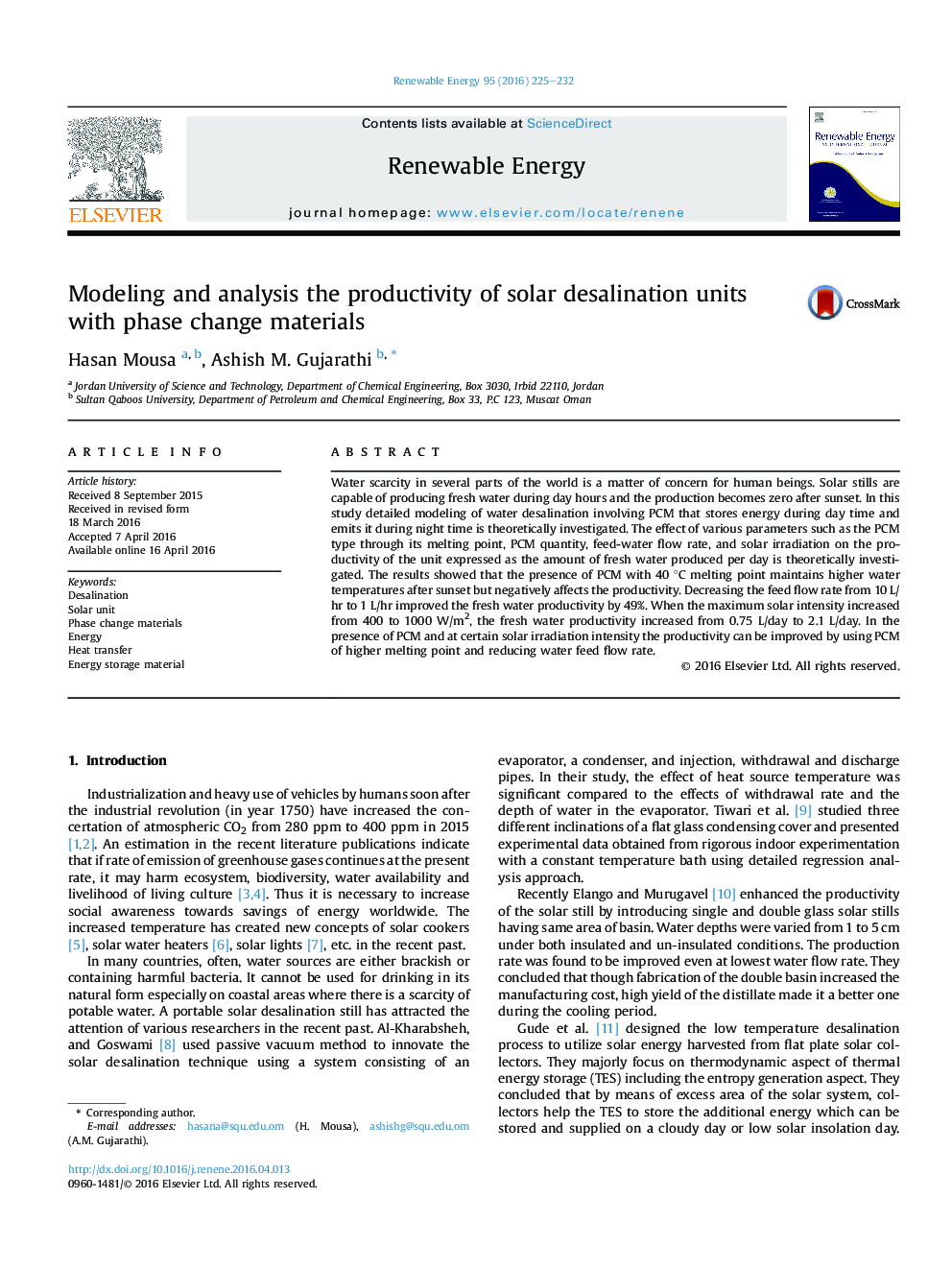| Article ID | Journal | Published Year | Pages | File Type |
|---|---|---|---|---|
| 299695 | Renewable Energy | 2016 | 8 Pages |
•The presence of PCM affects the variation of water temperature with time.•The amount of fresh water produced increases exponentially from sunrise to sunset.•Fresh water production is negatively affected by the amount of the PCM.•There is an optimum amount of PCM that one should use to achieve fresh and hot water.
Water scarcity in several parts of the world is a matter of concern for human beings. Solar stills are capable of producing fresh water during day hours and the production becomes zero after sunset. In this study detailed modeling of water desalination involving PCM that stores energy during day time and emits it during night time is theoretically investigated. The effect of various parameters such as the PCM type through its melting point, PCM quantity, feed-water flow rate, and solar irradiation on the productivity of the unit expressed as the amount of fresh water produced per day is theoretically investigated. The results showed that the presence of PCM with 40 °C melting point maintains higher water temperatures after sunset but negatively affects the productivity. Decreasing the feed flow rate from 10 L/hr to 1 L/hr improved the fresh water productivity by 49%. When the maximum solar intensity increased from 400 to 1000 W/m2, the fresh water productivity increased from 0.75 L/day to 2.1 L/day. In the presence of PCM and at certain solar irradiation intensity the productivity can be improved by using PCM of higher melting point and reducing water feed flow rate.
